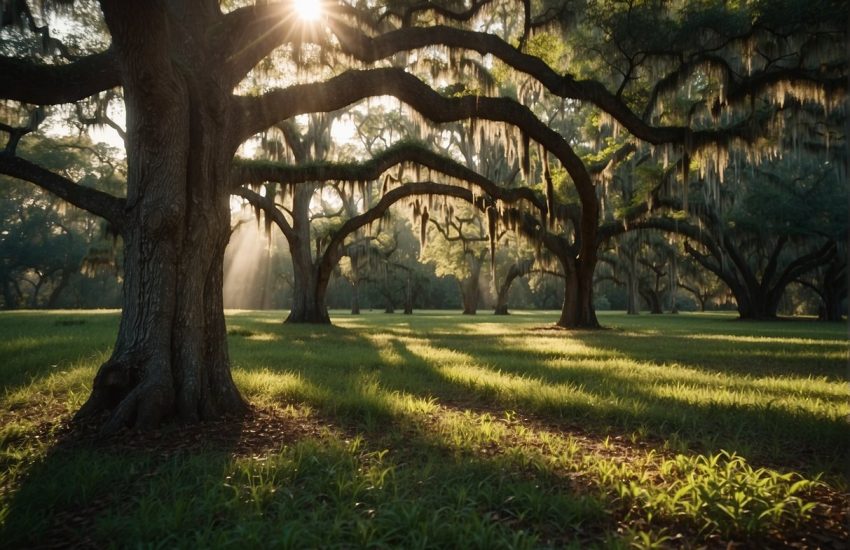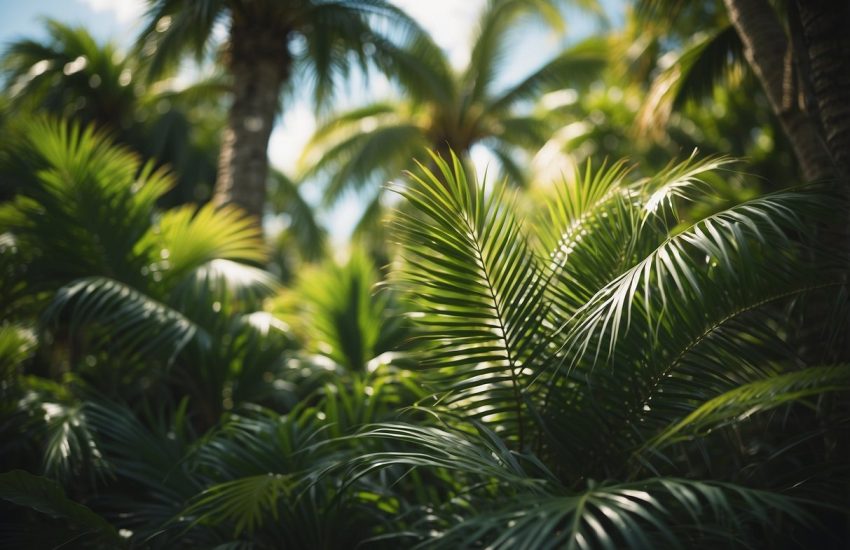Red Blooming Trees in Florida: A Guide to the Most Beautiful Species
Florida is home to many beautiful trees, but few are as striking as those with red blooms. These trees are a popular sight throughout the state, adding a splash of color to both urban and rural areas. From the vibrant reds of the Royal Poinciana to the soft pink hues of the Tabebuia, these trees are a testament to the natural beauty of Florida’s flora.

One of the most iconic red blooming trees in Florida is the Royal Poinciana. This tree is known for its large, showy blooms that range in color from bright red to orange. The Royal Poinciana is a popular ornamental tree in Florida, and can be found in many parks, gardens, and public spaces throughout the state. Its vibrant blooms make it a favorite among residents and visitors alike.
Another popular red blooming tree in Florida is the Tabebuia. This tree is known for its delicate, trumpet-shaped blooms that range in color from soft pink to deep red. The Tabebuia is a common sight along Florida’s highways and in residential neighborhoods, where it is often planted as an ornamental tree. Its beautiful blooms are a welcome sight in the springtime, when they add a touch of color to the landscape.
Overview of Red Blooming Trees in Florida
Florida is home to a diverse range of red blooming trees that add a splash of color to the landscape during the spring season. These trees are a popular choice for homeowners and landscapers alike due to their vibrant flowers and attractive foliage.
Native Red Flowering Species
Florida is home to several native red flowering species that are well adapted to the tropical climate of the region. One such species is the Red Maple (Acer rubrum), which is known for its striking red flowers that bloom in early spring. Another popular native species is the Redbud (Cercis canadensis), which produces clusters of bright red flowers in late winter.
Popular Ornamental Varieties
In addition to native species, there are several ornamental varieties of red blooming trees that are popular in Florida. One such variety is the Royal Poinciana (Delonix regia), which is known for its large, showy red flowers that bloom in the summer months. Another popular ornamental variety is the Bottlebrush (Callistemon spp.), which produces spikes of bright red flowers that resemble a bottlebrush.
Overall, red blooming trees are a great addition to any Florida landscape. Whether you choose a native species or an ornamental variety, these trees are sure to add a pop of color and beauty to your surroundings.
Cultivation and Care
Planting Considerations
When planting red blooming trees in Florida, it is important to consider the tree’s preferred growing conditions. Most red blooming trees prefer full sun or partial shade, although some can tolerate shade. It is also important to consider the tree’s size and spread, as some varieties can grow quite large and may not be suitable for smaller yards.
Red blooming trees can be either evergreen or deciduous, so it is important to choose a variety that fits your preferred aesthetic. Additionally, many red blooming trees prefer sandy, well-drained soil, so it is important to ensure the soil is suitable before planting.
Maintenance and Pruning
To keep red blooming trees healthy and looking their best, it is important to properly maintain and prune them. Regular pruning can help control the tree’s size and shape, as well as promote healthy growth. It is important to prune the tree during its dormant period to avoid damaging the tree or inhibiting its growth.
Red blooming trees are generally drought tolerant, but it is important to provide adequate water during periods of extended drought. Additionally, it is important to provide the tree with regular fertilization to promote healthy growth.
Overall, with proper care and maintenance, red blooming trees can be a beautiful and vibrant addition to any Florida landscape.
Environmental Impact and Benefits

Attracting Wildlife
Red blooming trees in Florida have a significant impact on the local wildlife. These trees attract a variety of birds, pollinators, bees, hummingbirds, and butterflies. The bright red flowers of these trees act as a beacon, drawing in these animals from miles away. This, in turn, helps to increase the biodiversity of the area.
One of the most significant benefits of attracting wildlife is pollination. The bees and butterflies that are attracted to these trees help to pollinate other plants in the area. This, in turn, helps to maintain a healthy ecosystem and ensures that plants continue to grow and thrive.
Adaptation to Climate
Red blooming trees in Florida have adapted to the tropical climate of the area. These trees are well-suited to the hot and humid conditions of the region, making them a popular choice for landscaping. Additionally, these trees are relatively frost-resistant, making them a great choice for year-round planting.
The adaptation of these trees to the local climate has several benefits. For one, it means that they require less maintenance than other trees. Additionally, it means that they are more likely to survive and thrive in the area, which helps to maintain the local ecosystem.
In conclusion, red blooming trees in Florida have a significant impact on the local environment. They attract a variety of wildlife, help to pollinate other plants, and are well-suited to the tropical climate of the region. These trees are an excellent choice for year-round planting and require less maintenance than other trees, making them a popular choice for landscaping.
Choosing the Right Tree for Your Landscape

When it comes to selecting a red blooming tree for your Florida landscape, there are a few things to consider. The right tree can add visual appeal and vibrant color to your yard, but it’s important to choose a tree that will thrive in your specific climate and soil conditions.
Color and Size Variations
Red blooming trees come in a variety of shades and sizes. Some popular options include the Redbud, which features bright pinkish-red flowers and can grow up to 30 feet tall, and the Crape Myrtle, which produces vibrant red, pink, or purple flowers and can range in size from a small shrub to a tree up to 30 feet tall.
It’s important to consider the size of your yard and the surrounding landscape when selecting a tree. A tree that is too large for your space can be difficult to maintain and may even pose a safety hazard. On the other hand, a tree that is too small may not have the visual impact you’re looking for.
Seasonal Blooming Patterns
Another important factor to consider when selecting a red blooming tree is its seasonal blooming pattern. Some trees, like the Dogwood, bloom in the spring, while others, like the Crape Myrtle, bloom throughout the summer and into the fall.
If you’re looking for a tree that will add color to your landscape during the winter months, consider the Firebush. While not a traditional tree, this shrub produces vibrant red flowers during the cooler months and can add a pop of color to an otherwise dreary landscape.
When selecting a red blooming tree for your Florida landscape, it’s important to do your research and choose a tree that will thrive in your specific climate and soil conditions. By considering factors like color and size variations and seasonal blooming patterns, you can select a tree that will add visual appeal and vibrant color to your yard for years to come.


